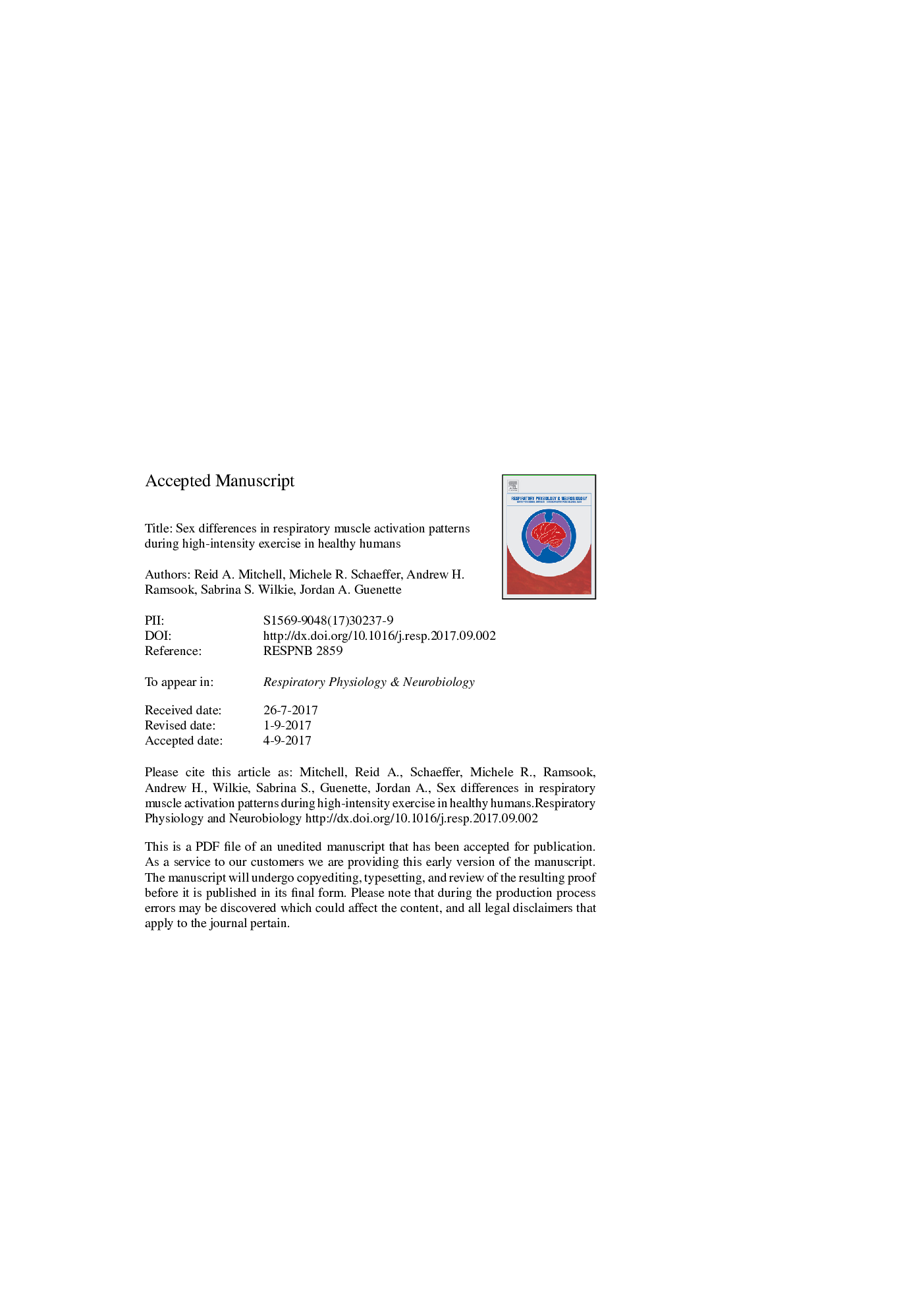| Article ID | Journal | Published Year | Pages | File Type |
|---|---|---|---|---|
| 5594044 | Respiratory Physiology & Neurobiology | 2018 | 17 Pages |
Abstract
Although women experience greater ventilatory constraints and have a higher work of breathing during exercise, they are less susceptible to diaphragm fatigue compared to men. The mechanisms for diaphragmatic fatigue resistance in women is unknown but may be related to sex differences in respiratory muscle recruitment. Accordingly, the purpose of this study was to determine if electromyography (EMG) of the diaphragm (EMGdi) and extra-diaphragmatic inspiratory muscles differ between sexes during exercise. Forty subjects (21M:19F) completed a constant load cycling test at 85% of maximum work rate until exhaustion, while instrumented with an oesophageal electrode catheter to measure EMGdi and surface electrodes to measure EMG of the sternocleidomastoid (EMGscm) and scalene (EMGsca) muscles. No sex difference in EMGdi was observed at any measurement time. However, EMGscm and EMGsca were higher throughout all submaximal exercise times in women (p < 0.01). These results suggest greater reliance on the extra-diaphragmatic inspiratory muscles in women relative to men, which may serve as a strategy to minimize diaphragmatic fatigue.
Related Topics
Life Sciences
Biochemistry, Genetics and Molecular Biology
Physiology
Authors
Reid A. Mitchell, Michele R. Schaeffer, Andrew H. Ramsook, Sabrina S. Wilkie, Jordan A. Guenette,
